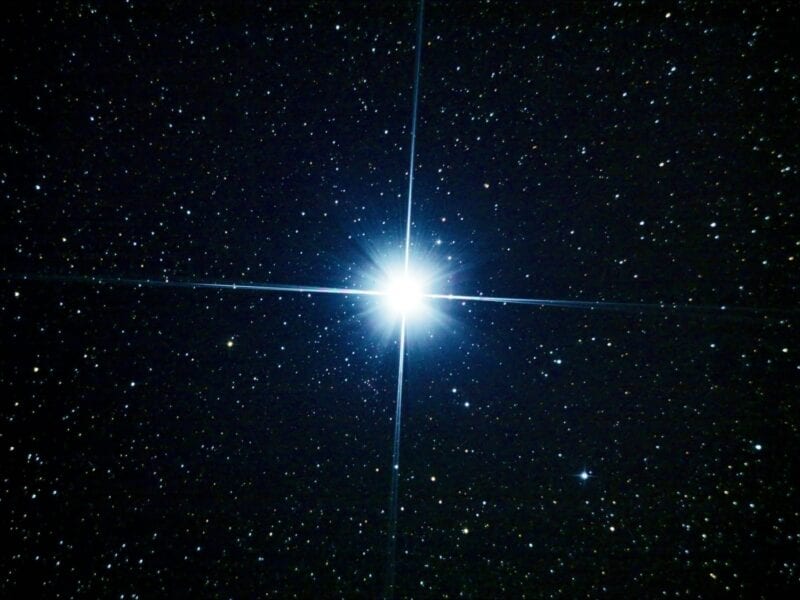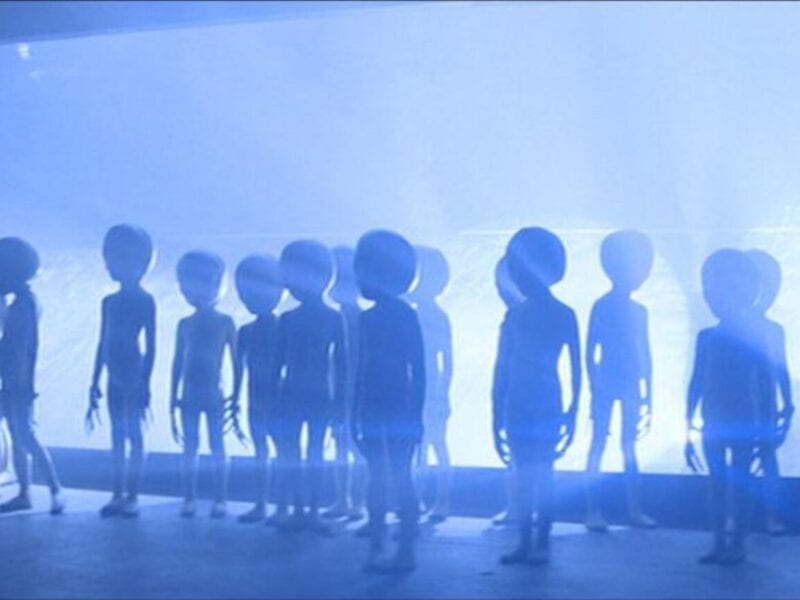
Can we really see the Christmas star this year? Jupiter facts say yes
The Star of Bethlehem, or the Christmas Star, is said to have inspired the three wise men from the East to visit the baby Jesus in bible stories. The German astronomer Johannes Kepler wrote in 1614 that he believed the ‘star of Bethlehem’ in the Nativity story may have been a conjunction of Jupiter and Saturn.
Whatever the scientific explanation, the phenomena believed to be the Star of Bethlehem is visible tonight through Christmas.
Look up at the sky… Jupiter and Saturn 🪐 align today.. 🤍#jupitersaturnconjunction #Telescope pic.twitter.com/jBSdenNTWF
— N📿🌿 (@brujapielcanela) December 21, 2020
Rare conjunction
Jupiter and Saturn will appear closer to each other in the night sky tonight than they have in 800 years – forming a celestial beacon akin to the Star of Bethlehem. The gas giants – the largest planets in the solar system – have been slowly getting closer in the sky since the summer, and will now appear like a double planet system. Coinciding with the Winter Solstice, this conjunction can be viewed by eye from anywhere on Earth.
Researchers have suggested that the ‘three wise men’ may have followed a triple conjunction of Jupiter, Saturn, and Venus. While Venus won’t be part of this week’s conjunction, it will still be an impressive astronomical site – one best viewed on the equator, but visible worldwide.
According to the experts at Star Registration, the planets regularly appear to pass each other in the solar system, with the positions of Jupiter & Saturn being aligned in the sky about once every 20 years. What makes this year’s spectacle so rare is it’s been nearly 400 years since the planets passed this close in the sky. And nearly 800 years since the alignment of Saturn & Jupiter occurred at night, allowing nearly everyone around the world to witness this “great conjunction”.
Jupiter- Saturn conjunction.
Taken by Mike Leemhuis on December 18, 2020 KY, USA#jupitersaturnconjunction pic.twitter.com/pjIwVC20yP— Space Science & Tech 🛰️ (@PMagnetE) December 19, 2020
Take a look
“On the evening of closest approach on December 21 they will look like a double planet, separated by only 1/5th the diameter of the full Moon,” wrote astronomer Patrick Hartigan, a professor of physics & astronomy at Rice University in Houston, in a statement. “For most telescope viewers, each planet and several of their largest moons will be visible in the same field of view that evening.”
“Alignments between these two planets are rather rare, occurring once every 20 years or so, but this conjunction is exceptionally rare because of how close the planets will appear to one another,” stated Hartigan, “You’d have to go all the way back to just before dawn on March 4, 1226, to see a closer alignment between these objects visible in the night sky.”
The closest alignment will appear just a tenth of a degree apart and last for a few days. On the 21st, they will appear so close that a pinkie finger at arm’s length will easily cover both planets in the sky. The planets will be easy to see with the unaided eye by looking toward the southwest just after sunset.
Jupiter and Saturn Conjunct in #Capricorn #jupitersaturnconjunction pic.twitter.com/Ml56n47R08
— SmacQ (@SandraM64197559) December 18, 2020
Christmas Star tradition
The Christmas star appears in the nativity story of the Gospel of Matthew, where they are said to have asked King Herod of Judea “where is he who has been born King of the Jews For we have seen His star in the East and have come to worship Him.”
It’s said the star led them to Jesus’s hometown where they worshipped him and gave him gifts of gold, frankincense, and myrrh. The gospel describes the visitors as “Magi” which is usually translated as “wise men”, but can also be used to mean astronomer/astrologer. Astronomers have made several attempts to calculate what this star may have been – whether it was a celestial event or pious fiction.

Astronomers’ view
The famed German astronomer Johannes Kepler wrote in 1614 that he believed the ‘star of Bethlehem’ in the biblical story of the three wise men could have been a rare triple conduction of Jupiter, Saturn, and Venus. This would create a very bright point of light in the sky that would only appear for a few days. A similar conjunction is due to happen Christmas 2020.
Other theories are a supernova explosion reasonably close – that could appear like a very, very bright sky for a relatively short period, or even a comet. Chinese & Korean stargazers have written about a bright object that may have been a comet or supernova around 5 BC seen for more than 70 days.
Ancient astronomers have also written of comets “hanging over” specific cities – just as the Star of Bethlehem is said to have “stood over” the place where Jesus was born – the town of Bethlehem.

Break out your telescopes
“On December 21, the sun will set around 4:30pm. After that, it is a race – the sky must get dark enough to see Jupiter & Saturn before they set as well, around 6:45pm,” said Walter Freeman, assistant teaching professor in the department of physics at Syracuse University’s College of Arts & Sciences in New York state.
“Jupiter & Saturn will likely stand out from the twilight glow starting around 5:00 or 5:15. With binoculars, a telescope, or a telephoto lens of 500 (millimeter) focal length or more, you may also be able to see the four largest moons of Jupiter,” Freeman stated.
“There’s no better way to celebrate the longest night of the year than watching the stars,” Freeman continued. “So if you’re planning a night of stargazing on the solstice, start off by admiring the largest planets before they set.”
–
Although everyone doesn’t celebrate Christmas, this once in several lifetimes celestial phenomenon should not be missed! Drop us a line in comments and tell us what you think about this out-of-this-world event.







